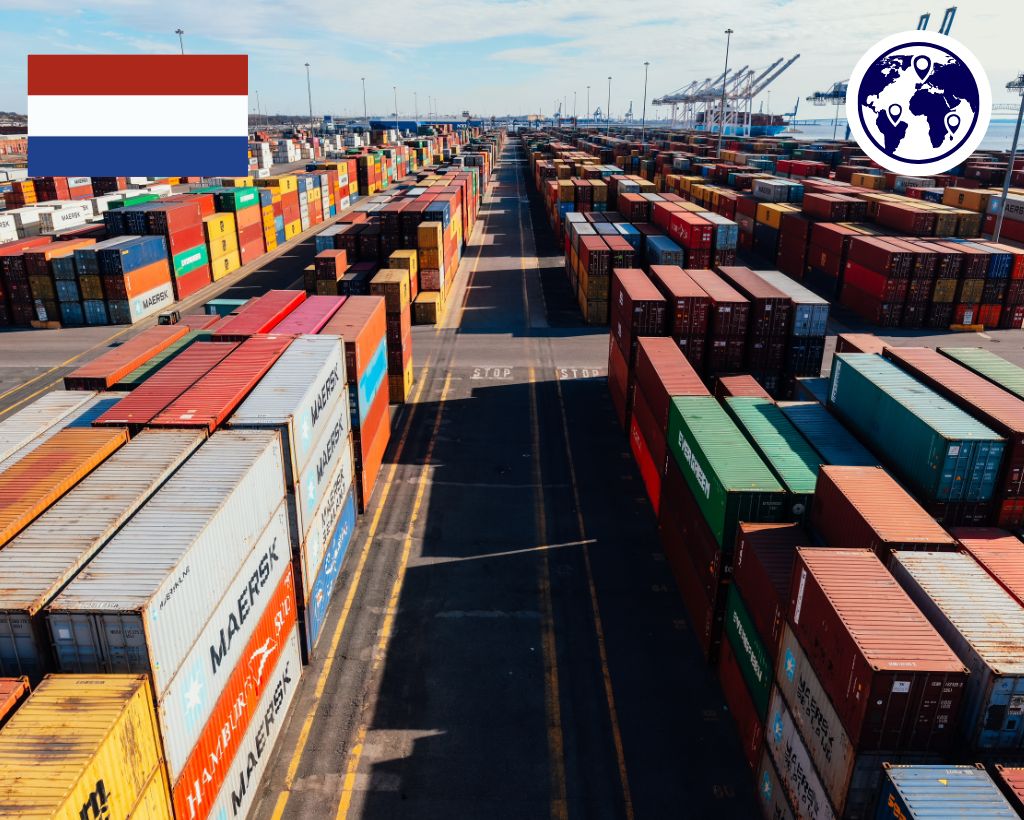
Probeer PlusClouds Eaglet-dienst en vind hoogwaardige B2B warme leads en kansen met AI-ondersteuning.


The Netherlands is one of Europe’s most important trading hubs, known for its advanced logistics, international ports, and open economy. Exporting from the Netherlands allows companies to expand their business reach, connect with global customers, and strengthen trade relations with key markets such as Turkey, Belgium, and England.
In 2024, the Netherlands exported goods worth over US$ 8.12 billion to Turkey and approximately US$ 85.66 billion to Belgium. These figures highlight how vital both countries are to Dutch trade. Meanwhile, exports to the United Kingdom have evolved since Brexit, while “re-exports” have decreased, domestic Dutch exports to the UK have continued to grow.
Germany remains the Netherlands’ top export destination, accounting for 22% of total exports in 2023 (about US$ 168 billion), followed by Belgium (11.6%, roughly US$ 86 billion).
Top 10 Export Destinations of the Netherlands (2023–2024)
| Rank | Country | Export Value (USD) | Share of Total Exports | Main Export Products |
|---|---|---|---|---|
| 1 | Germany | $168 billion | 22% | Machinery, vehicles, chemical products |
| 2 | Belgium | $86 billion | 11.6% | Fuels, machinery, food products |
| 3 | France | $73 billion | 9.9% | Chemicals, agricultural products |
| 4 | United Kingdom | $48 billion | 6.5% | Flowers, refined oil, vegetables |
| 5 | United States | $47 billion | 6.4% | Machinery, pharmaceuticals, high-tech goods |
| 6 | Italy | $34 billion | 4.6% | Machinery, electronics, agricultural goods |
| 7 | Spain | $27 billion | 3.6% | Chemicals, fruits and vegetables |
| 8 | Poland | $24 billion | 3.2% | Machinery, vehicles, electronics |
| 9 | China | $22 billion | 2.9% | Semiconductors, medical devices, chemicals |
| 10 | Sweden | $19 billion | 2.5% | Machinery, pharmaceuticals, electronics |
Turkey is a strategic bridge between Europe and Asia, offering a growing market for Dutch products such as machinery, agricultural goods, chemicals, and textiles. In 2024, the Netherlands exported approximately US$ 8.12 billion worth of goods to Turkey, reflecting a steady trade partnership between the two nations.
Establishing trade relations with Turkey enables Dutch exporters to access both European and Middle Eastern markets, making it a highly strategic export destination.

To export from the Netherlands to Turkey, the following documents are required:
• Commercial Invoice
• Packing List
• Bill of Lading or Air Waybill
• Certificate of Origin
Any mistakes in documentation can lead to customs delays or financial penalties at the Turkish border.
Products such as food, electronics, and pharmaceuticals must comply with Turkish quality and labeling standards. Import duties depend on the product type and origin. Partnering with a local customs broker or freight forwarder can help Dutch businesses comply with Turkish regulations smoothly.
• Sea freight → Cost-effective for large shipments
• Road transport → Ideal for flexible and mid-volume trade
• Air freight → Fastest option for urgent or high-value goods
Exporting from the Netherlands to Belgium is one of the most active trade flows in Europe, driven by proximity and shared EU membership. In 2024, the Netherlands exported roughly US$ 85.66 billion worth of goods to Belgium, making it the second-largest export destination after Germany.
Top exports include fuels, machinery, chemicals, and food products. The close economic relationship between both countries supports efficient cross-border logistics and trade integration.
As both countries are in the EU, no customs declaration is required for most goods. Only the following documents are needed:
• Commercial Invoice
• Packing List
• Bill of Lading (if applicable)
For large trade volumes, exporters must file Intrastat reports for statistical purposes.

Although exporting to Belgium is internal EU trade, exporters must follow:
• EU product safety standards
• VAT and tax regulations
• Labeling and packaging rules
The short distance and excellent infrastructure make road transport the most efficient option.
For bulk shipments, inland waterways are cost-effective and environmentally friendly.
Major routes connect Rotterdam and Antwerp (two of Europe’s busiest ports) ensuring seamless trade between the two countries.
Since Brexit, exporting from the Netherlands to England requires new customs formalities, tariffs, and documentation. While “re-exports” through the Netherlands have declined, the export of Dutch-made goods to the UK has continued to grow steadily.
In 2023–2024, total exports to the United Kingdom reached around US$ 48 billion, representing 6.5% of all Dutch exports.
When exporting from the Netherlands to England, make sure to prepare:
• Commercial Invoice
• Packing List
• Bill of Lading or Air Waybill
• Certificate of Origin
Incorrect or missing documents may cause customs delays at UK ports.
Exporters must comply with:
• UK customs declarations
• VAT rules and import duties
• Product certification requirements
Some goods qualify for reduced tariffs under the UK–EU Trade and Cooperation Agreement, especially industrial and manufactured products.
• Sea freight → via Rotterdam or Hoek van Holland to Harwich or Felixstowe
• Ferry transport → efficient for medium-volume goods
• Air freight → for express and high-value shipments
Exporting from the Netherlands to countries such as Turkey, Belgium, and England represents both opportunity and responsibility.
While EU exports (like to Belgium) are simple and fast, non-EU markets (like Turkey and post-Brexit England) require additional preparation, documentation, and compliance.
To succeed in international trade:
1. Prepare all export documents carefully.
2. Understand the customs rules of each destination country.
3. Choose the most suitable transport method.
4. Work with trusted logistics and customs partners.
With these strategies, Dutch exporters can continue to thrive and maintain the Netherlands’ strong position as one of the world’s most globally connected export economies.